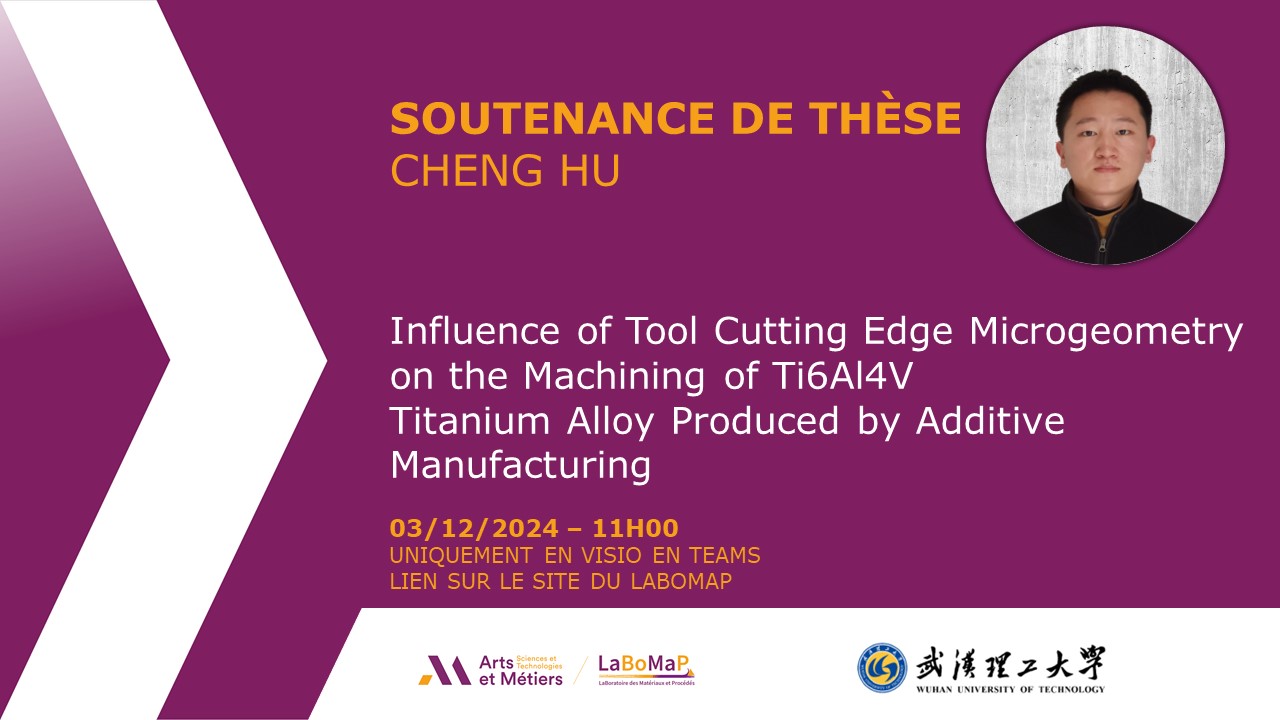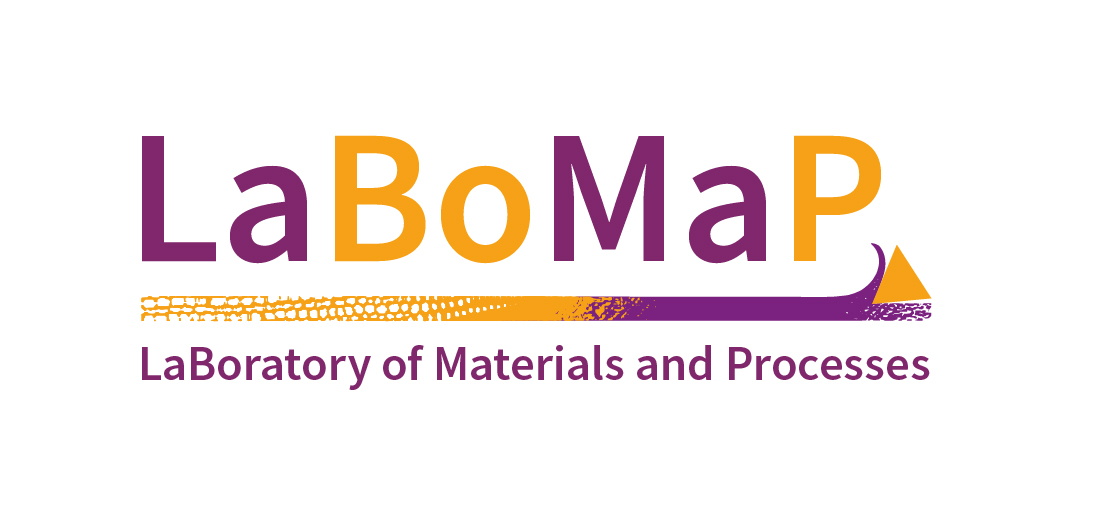Cheng Hu soutient sa thèse le 13/12/2024 à 11h00
Published on December 9, 2024 – Updated on December 9, 2024
Cheng HU, doctorant dans l'équipe UGV soutient ses travaux de thèse sous la direction de José OUTEIRO (LaboMaP) et Hélène BIREMBAUX (LaboMaP) et Han DING (Wuhan University of Technology).

Influence of Tool Cutting Edge Microgeometry on the Machining of Ti6Al4V Titanium Alloy Produced by Additive Manufacturing
La soutenance aura lieu le vendredi 13 décembre 2024 à 11h en visio via TEAMS.
Abstract
Ti6Al4V produced via Additive Manufacturing (AM) excels in creating components with intricate geometries and internal structures, making it ideal for aerospace and biomedical applications. However, the AM process alone often fails to meet the stringent performance requirements of such components. As a result, post-processing of AM parts through machining is essential to ensure compliance with the necessary standards for high-precision applications. During the machining of AM parts, the volume of material removed is significantly smaller than in conventional machining, which makes the Tool Cutting Edge (TCE) microgeometry a critical factor.
This thesis investigates the influence of TCE microgeometry on cutting performance and surface integrity using both modeling and experimental approaches. A constitutive model incorporating material plasticity and damage was developed and calibrated to capture the deformation behaviors of Ti6Al4V alloy produced by the Laser Powder Bed Fusion (LPBF) AM process. During the fabrication process, Selective Laser Melting (SLM) technology was employed with a stripes infill pattern, a downskin-upskin printing strategy, and a bidirectional powder recoater deposition method.
A user-defined subroutine, VUMAT, was implemented in the ABAQUS simulation software to incorporate this constitutive model. An improved cutting model using a Lagrangian formulation without a sacrificial layer (LAG-nSL) was developed to account for the effects of TCE microgeometry. The model's accuracy in predicting machining outcomes was validated through comparisons with existing models and experimental results.
Orthogonal cutting tests were conducted on LPBF-produced Ti6Al4V alloy using tools with different TCE geometries. Comparing the measured temperature fields and cutting forces with simulation predictions demonstrated the model’s ability to accurately predict key variables. This study provides theoretical support for optimizing cutting parameters and tool design in the post-AM machining of Ti6Al4V components.
This thesis investigates the influence of TCE microgeometry on cutting performance and surface integrity using both modeling and experimental approaches. A constitutive model incorporating material plasticity and damage was developed and calibrated to capture the deformation behaviors of Ti6Al4V alloy produced by the Laser Powder Bed Fusion (LPBF) AM process. During the fabrication process, Selective Laser Melting (SLM) technology was employed with a stripes infill pattern, a downskin-upskin printing strategy, and a bidirectional powder recoater deposition method.
A user-defined subroutine, VUMAT, was implemented in the ABAQUS simulation software to incorporate this constitutive model. An improved cutting model using a Lagrangian formulation without a sacrificial layer (LAG-nSL) was developed to account for the effects of TCE microgeometry. The model's accuracy in predicting machining outcomes was validated through comparisons with existing models and experimental results.
Orthogonal cutting tests were conducted on LPBF-produced Ti6Al4V alloy using tools with different TCE geometries. Comparing the measured temperature fields and cutting forces with simulation predictions demonstrated the model’s ability to accurately predict key variables. This study provides theoretical support for optimizing cutting parameters and tool design in the post-AM machining of Ti6Al4V components.
Membres du jury
- Mr. François DUCOBU Professor, University of Mons Rapporteur
- Mr. Xiaoming ZHANG Professor, Huazhong University of Science and Technology Rapporteur
- Mr. Mathieu RITOU Professor, Nantes University Examinateur
- Mr. José OUTEIRO Professor, University of North Carolina at Charlotte Examinateur
- Mrs. Hélène BIREMBAUX Associate Professor, Arts and Metiers Institute of Technology Examinatrice
- Mrs. Zhongmei GAO Associate Professor, Wuhan University of Technology Examinatrice
- Mr. Kejia ZHUANG Professor, Wuhan University of Technology Examinateur
- Mrs. Madalina CALAMAZ Associate Professor, Arts and Metiers Institute of Technology Examinatrice
Informations pratiques
- ID de réunion : 389 395 363 822
- Code secret : zQ6bw3f


